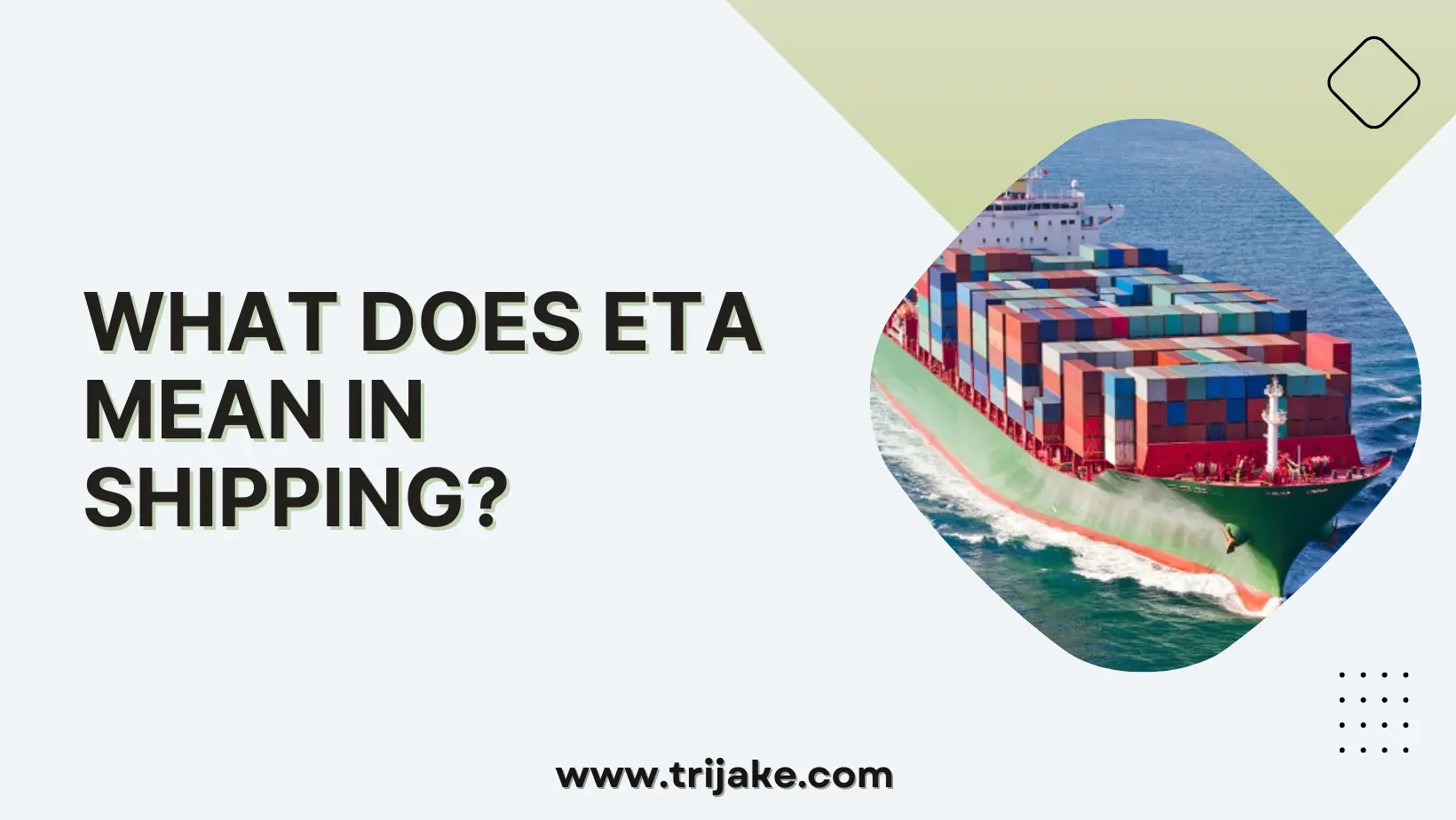What Does ETA Mean in Shipping?
Many a time, you often hear businessmen and women ask, what does ETA mean? To a regular person, this doesn’t mean much but as far as business is concerned, this is in the need-to-know category. As you read through, we will guide you on what it means, how to calculate it, and the benefits it holds.
What Does ETA Mean?
The Acronym means Estimated time of arrival, is a widely recognized expression used worldwide to indicate the expected arrival time.
Within the shipping and logistics sector, it serves the purpose of predicting when a shipment will reach its final destination port.
Carriers provide estimated arrival times to recipients in order to offer a general idea of when the vessel will reach the destination port, allowing them to plan their subsequent actions accordingly.
It’s worth noting that there are instances when the container does not reach its ETA as initially projected.
The Estimated time of arrival (ETA) for a vessel, container, or package in transit serves as a valuable tool for recipients to track their shipments without the need to contact the shipping office.
Simultaneously, operational teams can leverage this data to optimize delivery schedules and enhance predictability.
READ ALSO!!!
- How Long is Standard Shipping
- How Much Does a Door Dasher Make
- How Fast is Priority Mail International?
- How Late Does FedEx Deliver?
What are the Benefits of ETA?
Possessing a precise vessel’s Estimated Time of Arrival (ETA) can uphold or enhance customer contentment.
In the event of any delays, clients can receive advance notifications, enabling them to make necessary arrangements to safeguard their business interests.
Additional advantages of having an accurate ETA include:
1. Streamlines Logistics Planning
Understanding the anticipated arrival time of the ship allows both shippers and carriers to strategize their logistical activities.
This encompasses tasks like loading and unloading cargo, managing customs clearance and arranging transportation to the ultimate destination.
This proactive approach guarantees the timely delivery of goods and minimizes the potential for expensive setbacks.
2. Optimizes Port Operations
Port operators can ensure they have the appropriate personnel and equipment ready for the ship’s arrival.
This enables them to allocate their resources effectively, including berth space, cranes, and labor, to facilitate the efficient and punctual handling of the vessel’s cargo.
3. Improves Supply Chain Visibility
Stakeholders will receive up-to-the-minute data regarding the ship’s whereabouts, speed, and travel direction.
This guarantees seamless transparency in the supply chain, empowering shippers to monitor their cargo’s advancement and enhance their inventory management capabilities.
4. Enhances Customer Service
Informing the customer about the anticipated arrival of their goods plays a pivotal role in fostering a prosperous, enduring partnership. It cultivates trust, and loyalty, and has the potential to enhance the overall customer journey.
How to Calculate Estimated Time of Arrival
When calculating the ETAs, several factors come into play, such as:
1. The distance between the starting point and destination.
2. Port congestion and traffic.
3. The vessel’s typical cruising speed.
4. Weather and climatic conditions.
5. The number of ports of call on the route.
6. Unexpected emergencies, among various other considerations.
7. The time necessary for refueling.
Considering the factors at play, you can compute the projected arrival time using the following formula:
Estimated time of departure + Estimated time in transit = Estimated time of arrival (ETA)
When furnishing Estimated Times of Arrival (ETAs), carriers must make precise estimations of the time required for various processes.
In this regard, the utilization of real-time visibility through API integration and advanced technology aids in monitoring vessels, allowing for a more accurate prediction of when a vessel or container will arrive at the port.
READ ALSO!!!
- What is a Courier? Definition and Role Explained
- What Does in Transit Mean FedEx?
- Amazon Delivery Driver Salary: What to Expect
- How to Become a Medical Courier
Conclusion
The Estimated Time of Arrival is an important factor to know when running a business and maybe you order some goods. This is related to how you plan the rest of your time and day.
The ETA has its benefits as carefully stated when you go through this piece. You will also learn how to calculate it.
However, you should also know that the ETA may not be always correct. The arrival of your goods can either be too early or later than the ETA.
